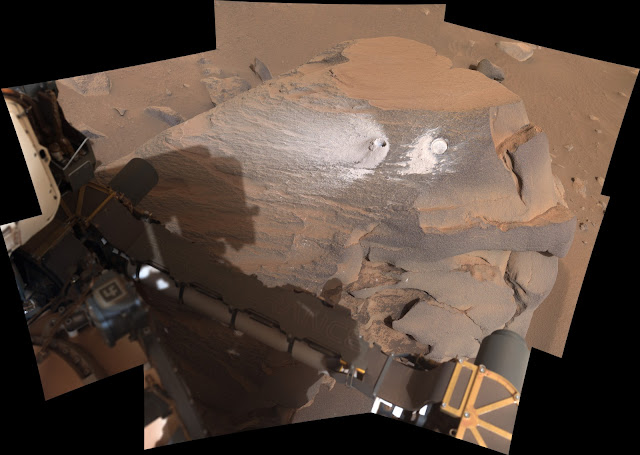Comet 12P/Pons-Brooks over the High Tatra Mountains in Slovakia
Petr Horálek: "Shown above is Comet 12P/Pons-Brooks gracing the evening sky above the summits of Kežmarský štít (8,389 ft/2,557 m), at right, and Lomnický štít (8,635 ft/2,632 m), at left in the Tatra Mountains of Slovakia. I had planned this image for a very long time, but despite precise planning, hundreds of kilometers of driving, and high-quality equipment, bad weather seemed to accompany me on my previous photo expeditions. However, March 19, 2024, I finally succeeded!"
"If you take a close look at the summit of Lomnický štít, you'll notice a small domed building. This structure is the Skalnaté pleso Observatory, one of the highest astronomical observatories in central Europe. It's known for its success in visual comet hunting. In fact, between 1946 and 1959, when comet Pons-Brooks last visited our Solar System, several comets were discovered here."
12P/Pons–Brooks is a periodic comet with an orbital period of 71 years. It fits the classical definition of a Halley-type comet with an orbital period between 20 and 200 years. It is also one of the brightest known periodic comets, reaching an absolute visual magnitude ~5 in its approach to perihelion.
Comet Pons-Brooks was discovered at Marseilles Observatory in July 1812 by Jean-Louis Pons.
Equipment Details:
Canon Ra camera; Tamron 70-200 mm lens at 200 mm; 1.4 x Teleconverter; ISO 2000; 42x20 seconds exposures - comet tracked on Vixen Polarie U; plus 7x20 seconds exposures for foreground image.
Location: Veľká Lomnica, Slovakia
Coordinates: 49.133, 20.355
Image & Caption Credit: Petr Horálek - Institute of Physics in Opava
Petr’s Website: https://www.petrhoralek.com
Image Date: March 19, 2024
Release Date: March 29, 2024
#NASA #Space #Astronomy #Science #Sun #Earth #Comets #Comet #Comet12PPonsBrooks #Perihelion #Lacerta #Constellation #SolarSystem #Astrophotography #PetrHorálek #Astrophotographer #CitizenScience #VeľkáLomnica #Slovakia #Europe #STEM #Education #EPoD
Petr%20Horalek-EPoD.jpg)
APoD.png)
.jpg)





















